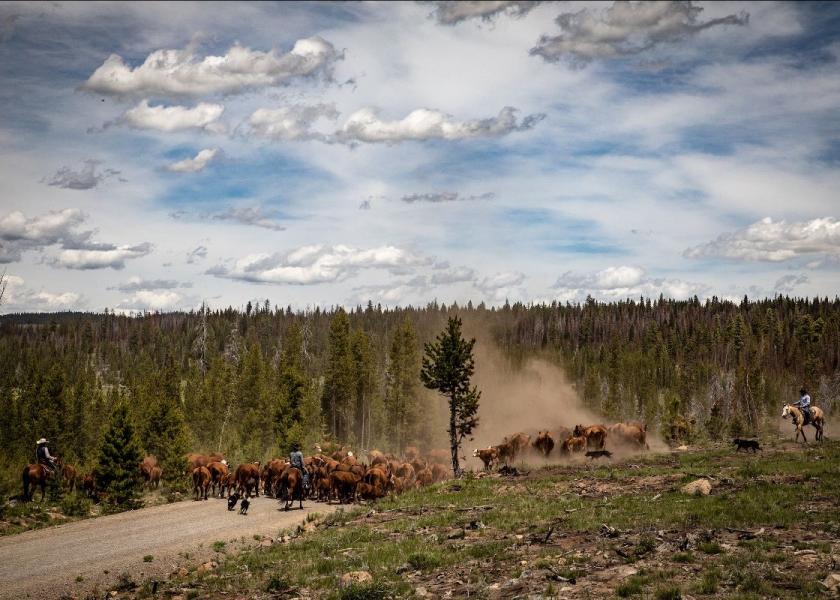Answering The Call To Quality

Despite current challenges, cow-calf producers raise the bar on furnishing consistent, efficient, high-quality beef.
When retail markets climbed last year in the wake of foodservice restrictions, beef took center plate as the protein of choice. While the beef industry emerged from the pandemic stronger, more roadblocks are in store for American farmers and ranchers.
According to CattleFax, drought conditions and high corn prices are causing a liquidation of the U.S. beef cow herd.
“We’re in a La Nina weather pattern, which means the bulk of the Western U.S. is both warm and dry,” explains CattleFax Vice President of Industry Affairs Kevin Good. “So unfortunately, we started to see some cow culling through the fall of last year, and we would expect that trend to continue through 2021.”
Corn and bean supplies are also tight this year, resulting in higher prices and presenting major headwinds for producers on productions costs.
Still, there is a bright story for beef quality. When demand shifted from foodservice to retail last year, beef market share increased 2%. This compares to a 20-year period where beef gained 6% of the market.
“We went from 40% to 46% of the dollar spent between 1998 to 2019, and that jumped 2% last year alone,” Good says. “We took market share away from both pork and poultry.
According to Good, this data is a positive. “It tells us we’ve got a higher quality, more consistent product, and consumers are willing to pay a wider price premium for beef compared to pork and poultry.”
He stresses that cow-calf producers make improvements to get top dollar for their cattle. “If you’re involved in the industry and you’re not making the changes, you’re not improving your herd or what you’re producing, over time instead of getting average or premiums, you’re going to start to get discounts and bigger discounts,” he says.
Over the last decade, the American Hereford Association (AHA) reports a 150% growth in marbling and an 86% growth in rib eye area. The Association’s feedout programs give producers data to make more informed breeding decisions.
AHA field representative Clint Brightwell says these programs are crucial to bettering the industry from the ground up. “The Hereford Feedout program is a great way for purebred producers to get involved in feeding cattle at a low-risk way and doesn’t take a lot of financial commitment,” he shares. “They will get the information back on their cattle to make better genetic improvements.”
Brightwell adds, “It goes back to putting themselves in the commercial cattleman’s shoes, learning more about feeding cattle and how the whole segment works, to then go back to their purebred cows and make their selections always thinking the next step ahead.”
When it comes to making improvements at the cow-calf level, Good stresses three areas in which to invest. “Those that are doing a better job typically are willing to pay more for animal health, nutrition and genetics. They know that dollars spent in those three avenues bring back more dollars at the bottom line. They’re able to improve efficiency and reproduction, so they have a higher percentage calf crop, and they also have heavier weaning weights — there’s more calves and more pounds to sell.”







